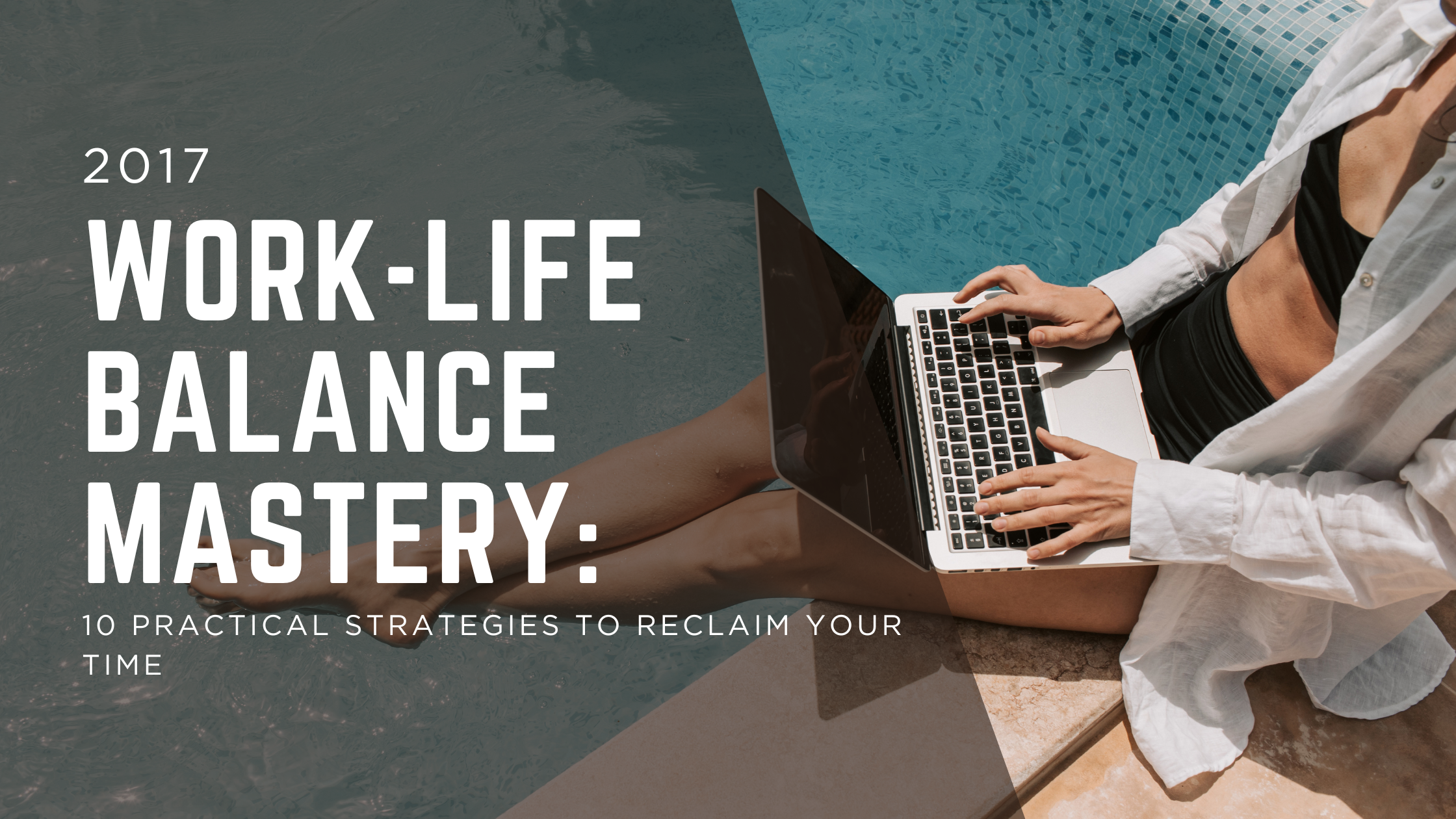
Work-Life Balance Mastery: 10 Practical Strategies to Reclaim Your Time
Building on our exploration of workaholic traits, today we’re focusing on actionable strategies to achieve sustainable work-life balance. Whether you’re recovering from work addiction or simply seeking more harmony, these practical approaches can help you set boundaries, prioritize self-care, and create a life that works for you.
⚖️ Work-Life Balance Series
This article continues our discussion from last week’s workaholic identification guide. Implement these strategies to create lasting positive change.
The Foundation: Understanding Work-Life Balance
Work-life balance isn’t about perfectly equal time allocation—it’s about creating boundaries that allow you to thrive in both professional and personal spheres. It’s an ongoing process of adjustment and self-awareness.
🎯 What Work-Life Balance Really Means
Balance isn’t a destination you reach, but a continuous process of adjusting boundaries as your life, priorities, and responsibilities evolve. The goal is sustainable harmony, not perfection.
Part 1: Strategic Boundary Setting
Effective boundaries protect your time and energy, creating space for what truly matters in both work and personal life.
1. Time Tracking & Awareness
You can’t manage what you don’t measure. Understanding how you currently spend your time is the foundation for creating meaningful change.
📊 Implementation Steps
- Track everything for one week—work tasks, personal activities, and transitions
- Categorize activities as essential, satisfying, or drainers
- Identify time patterns and energy highs/lows throughout your day
- Eliminate or delegate activities that don’t serve your priorities
💡 Time Tracking Insight
Most people discover they spend significant time on low-value activities that could be eliminated, delegated, or batched for efficiency.
2. Intentional Time Management
Move from reactive time management to proactive time design that aligns with your priorities and energy levels.
🔄 Task Batching
Group similar tasks together (errands, emails, calls) to reduce context switching and improve focus
🏠 Household Efficiency
Spread chores throughout the week rather than saving everything for weekends
🎯 Priority Focus
Do what truly needs doing and consciously let less important tasks go
3. Strategic Planning Systems
Without a personal plan, you’ll default to responding to other people’s priorities and emergencies.
📅 Weekly Family Calendar
- Schedule family events and personal commitments first
- Include buffer time between activities
- Review together as a family each Sunday
📝 Daily To-Do Lists
- Separate work and personal lists
- Limit to 3-5 priority items per day
- Include at least one enjoyable activity
4. The Art of Saying No
Every “yes” to something unimportant is a “no” to something that matters. Protect your time by setting clear boundaries.
5. Digital Boundary Creation
In our always-connected world, you must consciously create separation between work and personal time.
📱 Email Management
- Check email only 3x daily: late morning, early afternoon, late day
- Avoid checking email first thing in the morning
- Use email templates for common responses
- Turn off notifications during focus time
💻 Work-Life Separation
- Create a physical shutdown ritual at day’s end
- Keep work devices out of bedrooms
- Set “out of office” messages during personal time
- Communicate availability clearly to colleagues
6. Flexible Work Arrangements
If possible, explore alternative work structures that give you more control over your schedule.
7. Focus Optimization
Maximize your productive time by working with your natural concentration patterns rather than against them.
🧠 Concentration Science
Most people can maintain maximum focus for only 90 minutes before needing a break. After interruptions, it takes 2-3x the interruption time to regain deep concentration.
🎯 Application Tips
- Schedule 90-minute focused work blocks
- Take 15-20 minute breaks between deep work sessions
- Minimize interruptions by communicating availability
- Use “do not disturb” features during critical work
Part 2: Essential Self-Care Practices
Work-life balance requires fueling yourself physically, mentally, and emotionally to handle life’s demands.
8. Nutritional Foundations
What you eat directly impacts your energy, focus, and stress resilience throughout the day.
🥗 Energy-Optimizing Foods
- Fresh fruits and vegetables for sustained energy
- Lean proteins for mental clarity and stamina
- Complex carbohydrates for steady fuel release
- Healthy fats for brain function and satisfaction
🚫 Energy Drains to Limit
- Processed foods and refined sugars
- Excessive caffeine after midday
- Heavy, greasy meals during work hours
- Dehydration (aim for 8 glasses of water daily)
9. Sleep & Recovery
Quality sleep is non-negotiable for stress management, cognitive function, and overall wellbeing.
😴 Sleep Quantity
Aim for 7-9 hours of quality sleep nightly. Consistency matters more than perfect numbers.
📱 Digital Sunset
Avoid screens 1-2 hours before bed. Blue light suppresses melatonin, disrupting sleep quality.
🌙 Bedtime Routine
Create a consistent wind-down ritual: reading, gentle stretching, meditation, or quiet music.
10. Joy & Connection Activities
Schedule time for activities that replenish your energy and strengthen important relationships.
🎯 Solo Replenishment
- Yoga or meditation practice
- Reading for pleasure
- Creative hobbies or crafts
- Nature walks or exercise
👥 Social Connection
- Weekly date nights with your partner
- Family game nights or outings
- Friend hiking groups or book clubs
- Cooking classes or shared meals
Creating Your Personal Balance Plan
Step 1: Assessment
Identify your current pain points and priority areas for improvement
Step 2: Selection
Choose 2-3 strategies from this guide to implement immediately
Step 3: Implementation
Create specific, measurable actions for each chosen strategy
Step 4: Review
Schedule monthly check-ins to assess progress and adjust as needed
When to Seek Additional Support
Everyone needs help sometimes. If you’re struggling to implement these changes or feel overwhelmed, consider:
🌱 Your Balance Journey
Remember that work-life balance isn’t a one-time achievement but an ongoing practice. As your life circumstances, priorities, and responsibilities change, your approach to balance will need to evolve. Regular self-reflection and adjustment will help you maintain harmony through life’s inevitable changes.
“A wealthy person is simply someone who has learned how to make money when they’re not working.” – Robert Kiyosaki







